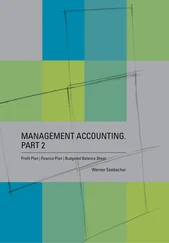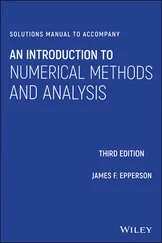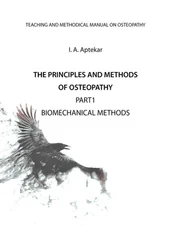9 PART D: Advanced Finite Difference Schemes for Two-Factor Problems CHAPTER 18: Splitting Methods, Part I 18.1 INTRODUCTION AND OBJECTIVES 18.2 BACKGROUND AND HISTORY 18.3 NOTATION, PREREQUISITES AND MODEL PROBLEMS 18.4 MOTIVATION: TWO-DIMENSIONAL HEAT EQUATION 18.5 OTHER RELATED SCHEMES FOR THE HEAT EQUATION 18.6 BOUNDARY CONDITIONS 18.7 TWO-DIMENSIONAL CONVECTION PDEs 18.8 THREE-DIMENSIONAL PROBLEMS 18.9 THE HOPSCOTCH METHOD 18.10 SOFTWARE DESIGN AND IMPLEMENTATION GUIDELINES 18.11 THE FUTURE: CONVECTION-DIFFUSION EQUATIONS 18.12 SUMMARY AND CONCLUSIONS CHAPTER 19: The Alternating Direction Explicit (ADE) Method 19.1 INTRODUCTION AND OBJECTIVES 19.2 BACKGROUND AND PROBLEM STATEMENT 19.3 GLOBAL OVERVIEW AND APPLICABILITY OF ADE 19.4 MOTIVATING EXAMPLES: ONE-DIMENSIONAL AND TWO-DIMENSIONAL DIFFUSION EQUATIONS 19.5 ADE FOR CONVECTION (ADVECTION) EQUATION 19.6 CONVECTION-DIFFUSION PDEs 19.7 ATTENTION POINTS WITH ADE 19.8 SUMMARY AND CONCLUSIONS CHAPTER 20: The Method of Lines (MOL), Splitting and the Matrix Exponential 20.1 INTRODUCTION AND OBJECTIVES 20.2 NOTATION AND PREREQUISITES: THE EXPONENTIAL FUNCTION 20.3 THE EXPONENTIAL OF A MATRIX: ADVANCED TOPICS 20.4 MOTIVATION: ONE-DIMENSIONAL HEAT EQUATION 20.5 SEMI-LINEAR PROBLEMS 20.6 TEST CASE: DOUBLE-BARRIER OPTIONS 20.7 SUMMARY AND CONCLUSIONS CHAPTER 21: Free and Moving Boundary Value Problems 21.1 INTRODUCTION AND OBJECTIVES 21.2 BACKGROUND, PROBLEM STATEMENT AND FORMULATIONS 21.3 NOTATION AND PREREQUISITES 21.4 SOME INITIAL EXAMPLES OF FREE AND MOVING BOUNDARY VALUE PROBLEMS 21.5 AN INTRODUCTION TO PARABOLIC VARIATIONAL INEQUALITIES 21.6 AN INTRODUCTION TO FRONT-FIXING 21.7 PYTHON CODE EXAMPLE: ADE FOR AMERICAN OPTION PRICING 21.8 SUMMARY AND CONCLUSIONS CHAPTER 22: Splitting Methods, Part II 22.1 INTRODUCTION AND OBJECTIVES 22.2 BACKGROUND AND PROBLEM STATEMENT: THE ESSENCE OF SEQUENTIAL SPLITTING 22.3 NOTATION AND MATHEMATICAL FORMULATION 22.4 MATHEMATICAL FOUNDATIONS OF SPLITTING METHODS 22.5 SOME POPULAR SPLITTING METHODS 22.6 APPLICATIONS AND RELATIONSHIPS TO COMPUTATIONAL FINANCE 22.7 SOFTWARE DESIGN AND IMPLEMENTATION GUIDELINES 22.8 EXPERIENCE REPORT: COMPARING ADI AND SPLITTING 22.9 SUMMARY AND CONCLUSIONS
10 PART E: Test Cases in Computational Finance CHAPTER 23: Multi-Asset Options 23.1 INTRODUCTION AND OBJECTIVES 23.2 BACKGROUND AND GOALS 23.3 THE BIVARIATE NORMAL DISTRIBUTION (BVN) AND ITS APPLICATIONS 23.4 PDE MODELS FOR MULTI-ASSET OPTION PROBLEMS: REQUIREMENTS AND DESIGN 23.5 AN OVERVIEW OF FINITE DIFFERENCE SCHEMES FOR MULTI-ASSET OPTION PROBLEMS 23.6 AMERICAN SPREAD OPTIONS 23.7 APPENDICES 23.8 SUMMARY AND CONCLUSIONS CHAPTER 24: Asian (Average Value) Options 24.1 INTRODUCTION AND OBJECTIVES 24.2 BACKGROUND AND PROBLEM STATEMENT 24.3 PROTOTYPE PDE MODEL 24.4 THE MANY WAYS TO HANDLE THE CONVECTIVE TERM 24.5 ADE FOR ASIAN OPTIONS 24.6 ADI FOR ASIAN OPTIONS 24.7 SUMMARY AND CONCLUSIONS CHAPTER 25: Interest Rate Models 25.1 INTRODUCTION AND OBJECTIVES 25.2 MAIN USE CASES 25.3 THE CIR MODEL 25.4 WELL-POSEDNESS OF THE CIRPDE MODEL 25.5 FINITE DIFFERENCE METHODS FOR THE CIR MODEL 25.6 HESTON MODEL AND THE FELLER CONDITION 25.7 SUMMARY AND CONCLUSION CHAPTER 26: Epilogue Models Follow-Up Chapters 1 to 25 26.1 INTRODUCTION AND OBJECTIVES 26.2 MIXED DERIVATIVES AND MONOTONE SCHEMES 26.3 THE COMPLEX STEP METHOD (CSM) REVISITED 26.4 EXTENDING THE HULL–WHITE: POSSIBLE PROJECTS 26.5 SUMMARY AND CONCLUSIONS
11 Bibliography
12 Index
13 End User License Agreement
1 Chapter 7TABLE 7.1 Accuracy of ADE, put option.TABLE 7.2 Accuracy of ADE, call option.TABLE 7.3 Stress-testing ADE, put option.TABLE 7.4 Convection-dominated problems.TABLE 7.5 Testing the CEV Model, (put option).TABLE 7.6 Calculating sensitivities.TABLE 7.7 Early exercise,  ,
,  .TABLE 7.8 Early exercise,
.TABLE 7.8 Early exercise,  ,
,  .TABLE 7.9 Comparison of FDM methods.TABLE 7.10 Implicit Euler, early exercise.
.TABLE 7.9 Comparison of FDM methods.TABLE 7.10 Implicit Euler, early exercise.
2 Chapter 16TABLE 16.1 Output from steps 1–5; data is  .
.
1 Chapter 2 FIGURE 2.1 Continuous and discrete spaces.
2 Chapter 7FIGURE 7.1 Stencil for fully implicit scheme.FIGURE 7.2 Crank–Nicolson and fully explicit stencils.FIGURE 7.3 Trinomial tree model.FIGURE 7.4 Non-uniform mesh.
3 Chapter 11FIGURE 11.1 Region and boundary.FIGURE 11.2 Boundaries for Heston model
4 Chapter 12FIGURE 12.1 Region of integration D .
5 Chapter 13FIGURE 13.1 Mesh generation.
6 Chapter 14FIGURE 14.1 Mesh in ( x, t ) space.FIGURE 14.2 Special cases.
7 Chapter 15FIGURE 15.1 Padé table for  .
.
8 Chapter 16FIGURE 16.1 Motivating divided differences.FIGURE 16.2 Region R and boundary curve C.
9 Chapter 17FIGURE 17.1 Example with three variables.FIGURE 17.2 Example with two variables.
10 Chapter 18FIGURE 18.1 Hopscotch mesh point.
11 Chapter 19FIGURE 19.1 Non-uniform mesh.FIGURE 19.2 Visualisation of ADE process.
12 Chapter 20FIGURE 20.1 Price profile.FIGURE 20.2 Delta profile.FIGURE 20.3 Gamma profile.
13 Chapter 22FIGURE 22.1 Block diagram for software framework.
14 Chapter 23FIGURE 23.1 Error handling and extreme values for the error functions.FIGURE 23.2 Context diagram for Monte Carlo engine.
15 Chapter 25FIGURE 25.1 Direction of information flow (two-dimensional case).FIGURE 25.2 Approximation on the boundary.
1 Cover
2 Title Page Numerical Methods in Computational Finance A Partial Differential Equation (PDE/FDM) Approach DANIEL J. DUFFY
3 Copyright This edition first published 2022 Copyright © 2022 by John Wiley & Sons, Ltd. Registered office John Wiley & Sons Ltd, The Atrium, Southern Gate, Chichester, West Sussex, PO19 8SQ, United Kingdom For details of our global editorial offices, for customer services and for information about how to apply for permission to reuse the copyright material in this book please see our website at www.wiley.com . All rights reserved. No part of this publication may be reproduced, stored in a retrieval system, or transmitted, in any form or by any means, electronic, mechanical, photocopying, recording or otherwise, except as permitted by the UK Copyright, Designs and Patents Act 1988, without the prior permission of the publisher. Wiley publishes in a variety of print and electronic formats and by print-on-demand. Some material included with standard print versions of this book may not be included in e-books or in print-on-demand. If this book refers to media such as a CD or DVD that is not included in the version you purchased, you may download this material at http://booksupport.wiley.com . For more information about Wiley products, visit www.wiley.com . Designations used by companies to distinguish their products are often claimed as trademarks. All brand names and product names used in this book are trade names, service marks, trademarks or registered trademarks of their respective owners. The publisher is not associated with any product or vendor mentioned in this book. Limit of Liability/Disclaimer of Warranty: While the publisher and author have used their best efforts in preparing this book, they make no representations or warranties with respect to the accuracy or completeness of the contents of this book and specifically disclaim any implied warranties of merchantability or fitness for a particular purpose. It is sold on the understanding that the publisher is not engaged in rendering professional services and neither the publisher nor the author shall be liable for damages arising here from. If professional advice or other expert assistance is required, the services of a competent professional should be sought. Library of Congress Cataloging-in-Publication Data is Available: ISBN 9781119719670 (Hardback) ISBN 9781119719724 (ePub) ISBN 9781119719694 (ePDF) Cover Design: Wiley Cover Image: © windesign/Shutterstock
Читать дальше

 ,
,  .TABLE 7.8 Early exercise,
.TABLE 7.8 Early exercise,  ,
,  .TABLE 7.9 Comparison of FDM methods.TABLE 7.10 Implicit Euler, early exercise.
.TABLE 7.9 Comparison of FDM methods.TABLE 7.10 Implicit Euler, early exercise. .
. .
.










